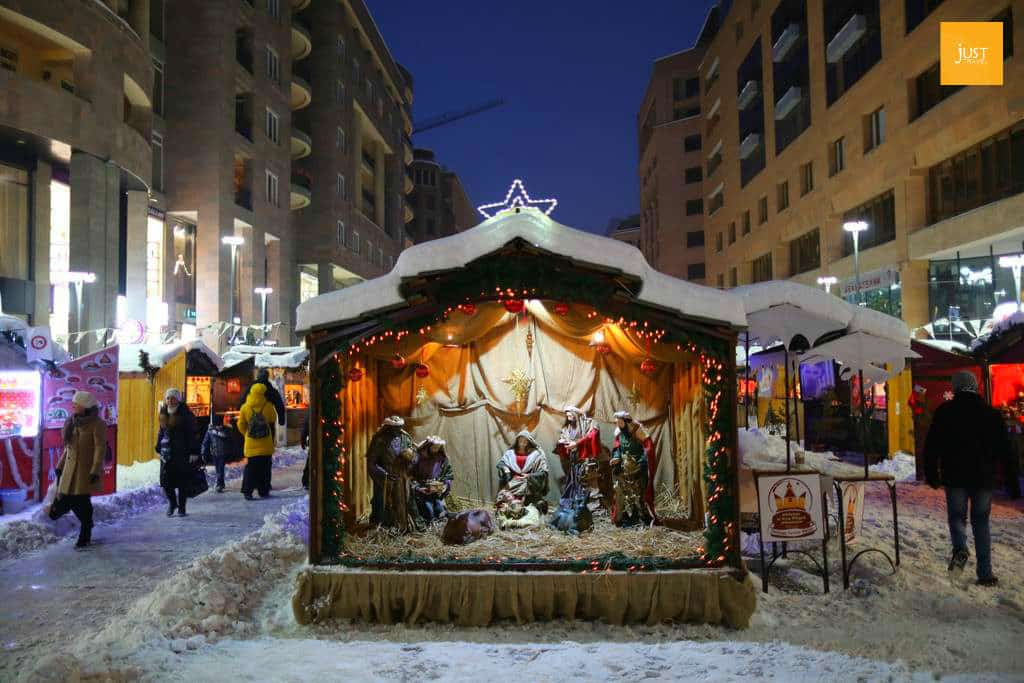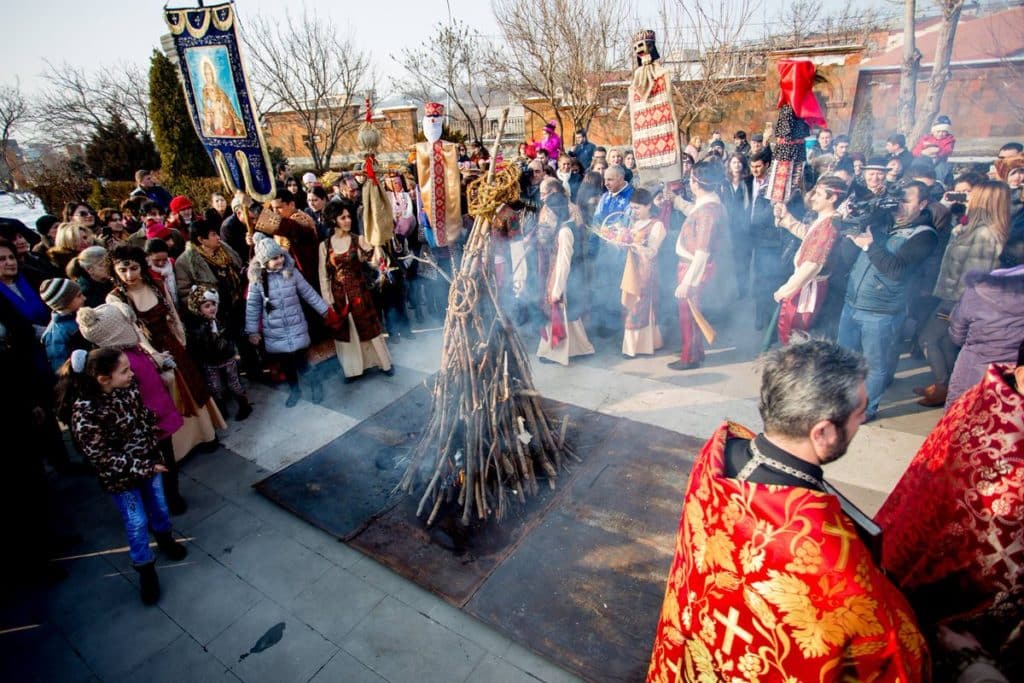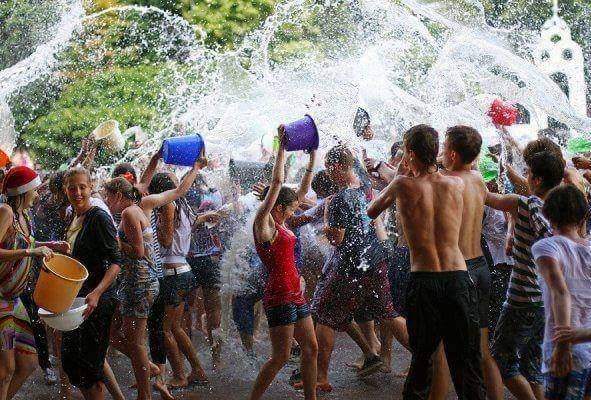
Armenian traditional holidays are a mixture of rich cultural heritage. Of course, most Armenian holidays are Christian and are celebrated by the Armenian Apostolic Church. However, many of them come from ancient times and have pagan elements. Among the numerous Armenian holidays are Vardavar and Trndez which are the most attractive for tourists.
There is no better time to visit Armenia than during the holidays, especially for tourists eager to learn more about the Armenian culture. Of course, there are some public holidays like Independence Day that are declared days off. However, there are also religious holidays that are celebrated by the Armenians during the year.
Armenian traditional holidays like Trndez or the grape blessing are a captivating window into a culture that thrives at the crossroads of ancient customs and Christianity. Let’s explore the most colorful and unusual holidays during which you can feel Armenia’s hospitality.
Christmas

Unlike the Western traditional celebration on December 25, the Armenian Apostolic Church celebrates Christmas on January 6. Armenians follow the ancient Julian calendar which places Christmas on this day. On Christmas Eve Armenians attend church service, while the Christmas Divine Liturgy is held on the morning of January 6.
Christmas is a family holiday when all gather around the table and enjoy traditional dishes, such as fish, rice with dried fruits, and pastries. The menu traditionally does not contain meat. Christmas is a day off and people walk along the decorated streets and Republic Square where a large Christmas Tree is installed.
New Year is more popular in Armenia because of its Soviet history. The decorations of streets and shops start at the beginning of December, and there is a Christmas market next to the main square. Families usually celebrate New Year with family and friends at home or in a restaurant. They exchange gifts and eat traditional dishes like tolma, roasted pork leg, nuts, dried fruits, and a lot of sweets.
St. Sargis Day
Have you ever heard of Armenians’ own Valentine’s Day? Yes, Armenians have a saint Sarkis who is the patron of youth and love. St. Sarkis Day is celebrated 63 days before the Easter. The relics of Sarkis are kept at the Saint Sarkis Monastery in the Armenian village of Ushi.
Young people participate in the holiday events on this day. However, most girls are waiting for this day because they hope to see their future groom in their dreams. The legend says if you eat a salty cookie before going to sleep before St. Sarkis Day, you will see the future groom or a bride who will bring you a glass of water. The cookies are usually baked by married women and handed over to young women and men who are single.
Trndez

Trndez or a feast of purification is celebrated by newlyweds and young people throughout Armenia. It is one of the holidays that has pagan origin and symbolizes spring and fertility in pre-Christian Armenia. It was connected with the worship of fire.
The holiday is named “Tiarn’ndaraj” or Candlemas Day and is marked 40 days after Christmas. Young people make a big bonfire in front of their houses and jump over it hand in hand. This symbolizes prosperity and luck. The first to jump are the couples that got married during the previous year. In some families, there is a tradition of handing over gifts to the newlyweds.
The bonfire is also set near the churches and is lit with a candle blessed during the divine service. While the couples are jumping over the fire, other young people are dancing in a circle around it.
Vardavar

Vardavar is a unique traditional Armenian holiday. It marks the Transfiguration of the Lord, typically celebrated in July, on the 14th Sunday following Easter. This ancient tradition has its roots in pre-Christian Armenia and the holiday was dedicated to Astghik, the goddess of love and beauty.
Vardavar is a day when all people throughout Armenia pour water on one another. Irrespective of age, all people eagerly participate in Vardavar. Locals take to the streets “armed” with buckets and water blasters. The Republic Square and a lake near the Opera Theater turn into a real “battlefield” with hundreds of people pouring water on each other. If you are in Armenia on that day, you are likely to become wet from head to toe. It’s a great way to cool down during the hottest summer months when the temperature may rise to 40 degrees Celsius.
Gapes Blessing

Grape Blessing Day or the Feast of the Assumption of the Holy Mother of God is one of 5 main holidays celebrated by the Armenian Apostolic Church. The holiday takes place in August and coincides with the grape harvest season. In pre-Christian times it cherished the goddess of harvest and fertility Anahit.
The first harvested grapes are brought to the church for a blessing. Subsequently, people can eat grapes and use them for winemaking. The ceremony symbolizes the central role of grapes and wine, blood of the Christ.
Traveling to Armenia During Holidays
Traditionally summer is the most popular time of the year for tourists visiting Armenia. However, we encourage you not to be limited by summer. Armenia’s celebrations like Christmas in winter or Vardavar in summer add an extra layer of excitement to your visit. Tourists can witness street festivities and traditional customs during these days.
Most importantly to make the most of your Armenian journey, consider arranging the trip with the help of Levon Travel. The agency offers a wide range of tours and services to meet the diverse interests of the tourists.
